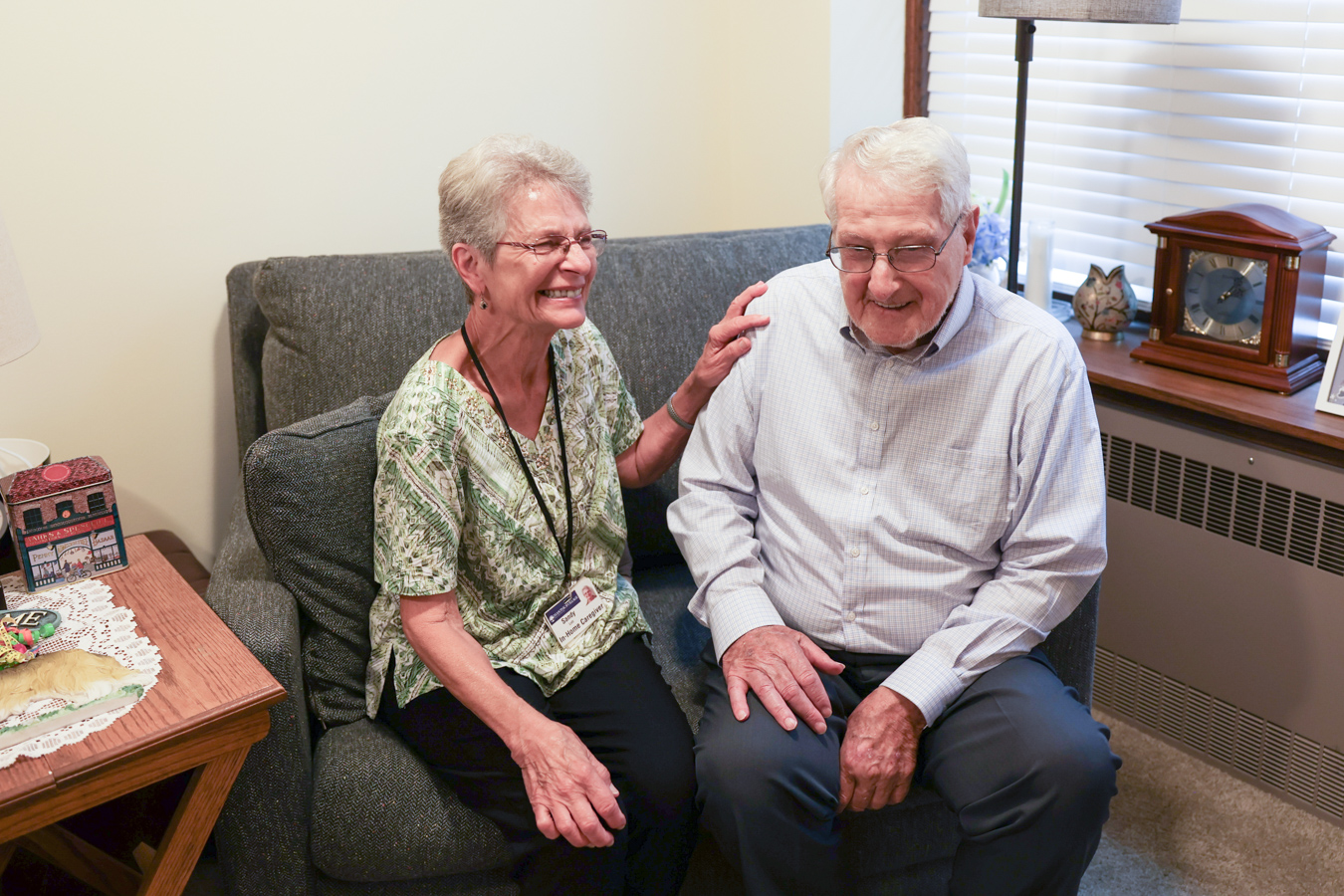A National Poll on Healthy Aging, conducted by the University of Michigan’s Institute for Healthcare Policy and Innovation, found that 88% of adults between the ages of 50 and 80 believe it’s important to age in place, which they define as “living independently, safely and comfortably in one’s home for as long as possible.”
But almost 70% of adults 65 and older will need some long-term care services in their homes to stay safe and meet their everyday needs, the survey states. To understand your in-home care options, it’s important to know the difference between home care and home health care.
Home Care refers to services provided by in-home caregivers, such as companionship, helping around the house and assisting with bathing and dressing, for example, according to the National Council on Aging.
Home Health Care, which must be prescribed by a doctor, refers to the management of medical needs and conditions, including wound and catheter care and administering medications and injections. Services may include skilled nursing; physical, occupational and speech therapy; medical social work; and the assistance of a home health aide.
So how do you determine which kind of in-home care someone needs? And what questions or concerns do older adults and their loved ones typically have about in-home care?
When a client calls asking for home care services, Kathleen Noll, home care manager at Masonic Village, makes an appointment to come to their home for a free visit. At that visit, a service agreement is signed by the client and an individual care plan is designed to meet their specific needs, for example: grocery shopping, laundry, transportation, light housekeeping and personal care.
“Clients and their loved ones usually ask what the fee for the service will be at the time a caregiver is assisting them, and they also want to know what specifically caregivers are able to assist with,” Kathleen said. “We have a brochure that is very informative in describing the support we offer.”
Companion care is often requested for an individual who is considered “dependent” or can’t be left alone and has some form of memory loss. Having a companion come sit with this person enables the primary caregiver (usually a spouse) to leave and run errands or attend an event knowing their loved one is being supervised for safety. This allows the primary caregiver/spouse to spend some time away from their caregiving duties and take care of themselves and their own needs. Rates per hour vary for both on and off-campus clients.
The Home Care program also offers a Care Coordinator service conducted by a registered nurse, who can also perform an overall health assessment, as well as assist with finding a local primary care physician, dentist, podiatrist, optician and other medical specialist.
Jenna Zahm, director of home health at Masonic Village, said she typically receives an order from a physician before her staff performs an evaluation on a potential client. During the initial assessment, a nurse or physical therapist will determine how often and for how long that person will need assistance.
“If the doctor just orders a nurse, but we see there is a need for another discipline [physical therapy, occupational therapy, social work, speech therapy or home health aide], we can call the doctor and request an order,” Jenna said. “Most of the questions are answered at the time of admission, and most frequently, people want to know how often and for how long we are coming in.”
Home health aides are part of a short-term service that provides in-home assistance, mostly with bathing. This service is typically provided for 45 minutes to an hour, one to three times a week.
“We do not provide aides if that is the only thing a client needs,” Jenna said. “Our goal is to get the patient/family independent with these tasks.”
It’s important to know what in-home care options are available for each person’s situation. The right care at the right time can enable someone to not just age in place but thrive in place.




